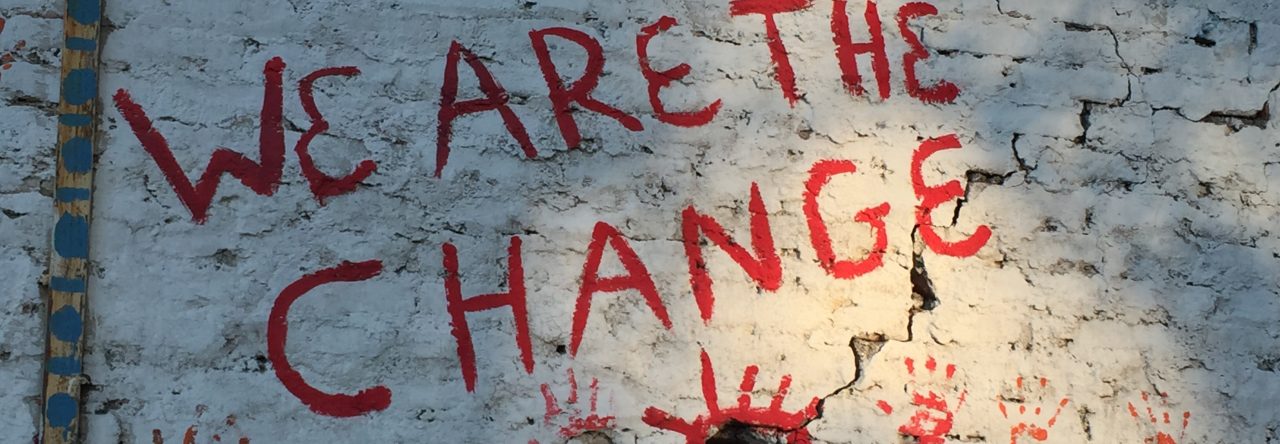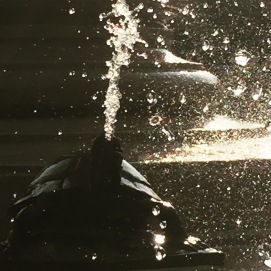
Originally published on The Advocates Post
I went to Mwananyamala Hospital (a government facility) for HIV testing. During the pre-counseling, I came out as gay to the health staff (counselor) and immediately he condemned me saying that it was my fault to catch the virus because of my behavior of practicing anal sex. The counselor used abusive words and told me that I have to suffer both punishments being HIV positive and also going to hell because of my sins. That made me leave the Centre without testing. I developed a negative attitude and decided not to go for HIV anymore until my friend from a LGBT advocacy organization helped me go to user friendly Centre [private] and was tested positive. I am now on treatment.”
― 27-year old gay man interviewed in
Dar es Salaam, Tanzania
Through The Advocates for Human Rights’ work promoting LGBTI rights around the world, we routinely hear stories like this of the struggle to access health care and health information. On World Aids Day (December 1), it is particularly important that we draw attention to the fact that anti-LGBTI discrimination harms efforts to combat HIV/AIDS worldwide.
Tanzania, where The Advocates has partnered recently with LGBTI human rights organizations, provides a good example of the problem. Due to widespread discrimination based on sexual orientation and gender identity, LGBT individuals in Tanzania fear disclosing their sexual orientation to health care providers. Further, health care providers often refuse needed services to LGBT individuals. In its Third National Multi-Sectoral Strategic Framework for HIV and AIDS (NMSF III), the Government of Tanzania recognized the barrier that anti-LGBT discrimination can pose to health care access: “Stigma and discrimination against MSM [men who have sex with men] remains high, posing a significant challenge to outreach and delivery of friendly health services.”[1] Indeed, some non-governmental organizations estimate that over 2 million LGBT Tanzanians lack access to quality health services.
Anti-LGBT discrimination in the health sector includes denial of services, verbal harassment and abuse, and violations of confidentiality.[2] In particular, health care providers deny treatment to openly LGBT individuals seeking treatment for sexually transmitted infections (STIs) and HIV/AIDS.[3] Hostility from health care providers drives gay men outside of the health care system, depriving them of both services and information.[4]
In response to this discrimination, many LGBT Tanzanians choose to hide their sexual orientation or gender identity from their health care providers.[5] . Such nondisclosure, however, may prevent health care providers from addressing needs specific to LGBT patients. For example, a recent study assessing HIV and STIs among gay men in Tanzania found that they often do not disclose their sexual orientation to health care providers, hindering detection of rectal STIs.[6]
Tanzania’s legal system imposes some of the harshest penalties on homosexual conduct in all of Africa. Homosexual conduct has been illegal on mainland Tanzania since the implementation of the Tanzanian Penal Code in 1945.[7] Homosexual conduct has been illegal under the Zanzibar Penal Code since 1934.[8]
As a result, LGBT individuals decline to seek health care due to fear of revealing criminal conduct to health care providers.[9] Similarly, health care providers cite the criminalization of same-sex sexual conduct as a basis for denying services to LGBT people.[10] Moreover, criminalization perpetuates stigma, and stigmatization prevents lawmakers from addressing LGBT-specific health needs.[11]
In addition to obstructing health care access generally, anti-LGBT discrimination undermines efforts to fight HIV/AIDS. NMSF III recognizes men who have sex with men (MSM) as a population “at high risk for exposure to HIV or for transmitting HIV.”[12] In fact, multiple sources recognize that the rate of HIV/AIDS among MSM is higher than that of the general population of Tanzania.[13]
Criminalization of same-sex conduct in Tanzania hurts all Tanzanians, because it hinders efforts to fight the harm that HIV/AIDS inflicts on all populations. Criminalization encumbers HIV/AIDS-related public health campaigns and research.[14] The International Lesbian Gay Bisexual Trans and Intersex Association recognizes that anti-LGBT discrimination drives LGBT people “underground,” impeding implementation of effective HIV/AIDS-related education program.[15] Criminalization also harms outreach efforts by NGOs that do not wish to violate Tanzanian laws.[16] Around the world, countries that criminalize same-sex conduct demonstrate higher rates of HIV among gay men than those that do not criminalize such conduct.[17]
A gay man from Mwanza stated:
I was very sick and some of my friends advised me to have an HIV test. I went to the nearest Centre where almost everyone knew me. A queue of people were pushing me away because they never wanted me near them. An officer came out and told me to find another place to go, because I was not welcome in that hospital because of my behavior. I had no choice but to leave the Centre ashamed and I planned to commit suicide. My friend learned about my plan before I poisoned myself and called [name withheld] who helped me go through that moment, he also referred me to a user friendly facility.[18]
Even the Tanzanian Government acknowledges that criminalization of same-sex conduct complicates Tanzania’s response to HIV/AIDS: “Given the criminalization of consensual adult homosexual intercourse, the multi-sectoral national response requires significant cooperation from all key stakeholders to ensure that MSM are reached with HIV and AIDS services.”[19]
Unfortunately, the Tanzanian Government has yet to take concrete action to amend the National Multi-Sectoral Strategic Framework for HIV and AIDS to establish that reducing the transmission of HIV among gay men is a central part of the national AIDS strategy and develop an implementation strategy to meet this objective.
On World AIDS Day, The Advocates for Human Rights calls upon all governments to ensure access to health care and health information for all LGBT individuals by:
- Requiring all public health care workers to receive comprehensive diversity training, including training on sexual orientation, gender identity, and the rights of LGBT people.
- Establishing and identifying LGBT-friendly health care facilities where LGBT people will feel free and comfortable to access services.
- Advancing national Standards of Practice for providing health care to LGBT individuals. These standards should:
- Prohibit discrimination in the delivery of services to LGBT clients and their families.
- Require visible posting of non-discrimination policies and inclusion of policies in organizational brochures and informational and promotional materials.
- Establish comprehensive and easily accessible procedures for clients to file and resolve complaints alleging violations of these policies.
- Designate of one or more persons within each health care provider to ensure compliance with the Standard of Care.
- Require all reception, intake, and assessment staff to be familiar with providers within the health care organization with expertise in and sensitivity to LGBT issues, and appropriately convey this information to patients.
- Provide comprehensive ongoing training for direct care staff to identify and address basic health issues within their field of expertise that may particularly affect LGBT clients.
- Develop a comprehensive resource list for appropriate referrals for special gay, lesbian, bisexual, and transgender health concerns.
- Develop written confidentiality policies which explicitly include sexual orientation and gender identity, indicating that such information is to be considered highly sensitive and treated accordingly.[20]
- Developing a public outreach and education campaign directed toward the LGBT community that educates LGBT Tanzanians on proper HIV/AIDS prevention and identifies LGBT-friendly health care resources.[21]
Jennifer Prestholdt is the Deputy Director and International Justice Program Director at The Advocates for Human Rights.
[1] United Republic of Tanzania, Prime Minister’s Office, Tanzania Third National Multi-Sectoral Strategic Framework for HIV and AIDS (2013/14-2017/18) (November 2013).
[2] Human Rights Watch, “Treat Us Like Human Beings”: Discrimination against Sex Workers, Sexual and Gender Minorities, and People Who Use Drugs In Tanzania (2013).
[3] Canada: Immigration and Refugee Board of Canada, Tanzania: Treatment of sexual minorities by society and government authorities; recourse and protection available to those who have been subject to ill treatment (2007-July 2014), 8 August 2014, TZA104923.E; Human Rights Watch, “Treat Us Like Human Beings”: Discrimination against Sex Workers, Sexual and Gender Minorities, and People Who Use Drugs In Tanzania (2013).
[4] George Ayala et al., Social Discrimination Against Men Who Have Sex With Men (MSM): Implications for HIV Policy and Programs (May 2010).
[5] Canada: Immigration and Refugee Board of Canada, Tanzania: Treatment of sexual minorities by society and government authorities; recourse and protection available to those who have been subject to ill treatment (2007-July 2014), 8 August 2014, TZA104923.E.
[6] Ross MW, Nyoni J, Ahaneku HO, et al., High HIV seroprevalence, rectal STIs and risky sexual behaviour in men who have sex with men in Dar es Salaam and Tanga, Tanzania, BMJ Open 2014;4:e006175.doi:10.1136/bmjopen-2014-006175.
[7] Tanzania Penal Code of 1945 (as amended by the Sexual Offences Special Provisions Act, 1998), Sections 138A, 154-155. The Sexual Offenses Special Provisions Act of 1998 updated certain sections of the penal code, but kept the prohibitions on homosexual conduct.
[8] Tanzania’s heavy reliance upon its British based penal code stands in stark contrast to its neighbors—most of which have penal codes that impose significantly lower penalties on homosexual conduct or no penalties at all. Kenya, Zambia, and Malawi each have penalties of up to 14 years in prison for homosexual conduct, and Uganda’s criminal code mandates life imprisonment. Though homosexual conduct is illegal in Burundi, penalties only range from 3 months to 2 years. Homosexual conduct is legal in Mozambique, Rwanda, and the Democratic Republic of the Congo.
[9] United Nations Human Rights Office of the High Commissioner, Born Free and Equal: Sexual Orientation and Gender Identity in International Human Rights Law, HR/PUB/12/06 (2012).
[10] Id.
[11] Id.
[12] United Republic of Tanzania, Prime Minister’s Office, Tanzania Third National Multi-Sectoral Strategic Framework for HIV and AIDS (2013/14-2017/18) (November 2013).
[13] Human Rights Watch has indicated that HIV prevalence among MSM in Dar es Salaam is as high as 40 percent. Human Rights Watch, “Treat Us Like Human Beings”: Discrimination against Sex Workers, Sexual and Gender Minorities, and People Who Use Drugs In Tanzania (2013). Tanzania’s NMSF III cites a study in which 41 percent of 271 Tanzanian MSM tested seropositive for HIV. United Republic of Tanzania, Prime Minister’s Office, Tanzania Third National Multi-Sectoral Strategic Framework for HIV and AIDS (2013/14-2017/18) (November 2013). Further, a 2014 study found that MSM in Dar es Salaam had an HIV rate 2.5 times that of the general population. Ross MW, Nyoni J, Ahaneku HO, et al. High HIV seroprevalence, rectal STIs and risky sexual behaviour in men who have sex with men in Dar es Salaam and Tanga, Tanzania. BMJ Open 2014;4:e006175.doi:10.1136/bmjopen-2014-006175.
[14] Human Rights Watch, “Treat Us Like Human Beings”: Discrimination against Sex Workers, Sexual and Gender Minorities, and People Who Use Drugs In Tanzania (2013).
[15] Itaborahy, LP & Zhu, J, State-Sponsored Homophobia: A world survey of laws: Criminalisation, protection and recognition of same-sex love (8th ed. 2013); see also UN Office of the High Commissioner for Human Rights, Born Free and Equal: Sexual Orientation and Gender Identity in International Human Rights Law, HR/PUB/12/06 (2012).
[16] Human Rights Watch, “Treat Us Like Human Beings”: Discrimination against Sex Workers, Sexual and Gender Minorities, and People Who Use Drugs In Tanzania (2013).
[17] George Ayala et al., Social Discrimination Against Men Who Have Sex With Men (MSM): Implications for HIV Policy and Programs (May 2010).
[18] Personal interview with LGBT advocacy organization. The victim’s identity is being withheld for security reasons.
[19] United Republic of Tanzania, Prime Minister’s Office, Tanzania Third National Multi-Sectoral Strategic Framework for HIV and AIDS (2013/14-2017/18) (November 2013).
[20] These recommendations are based on standards developed by the GLBT Health Access Project. More information on these standards are available at: http://www.glbthealth.org/CommunityStandardsofPractice.htm
[21] See, e.g., Republic of Kenya, Ministry of Education, Science and Technology, Education Sector Policy on HIV and AIDS (2d ed. 2013), https://www.usaid.gov/sites/default/files/documents/1860/Final%20policy%20HIV%20and%20AIDS%202013.pdf















You must be logged in to post a comment.